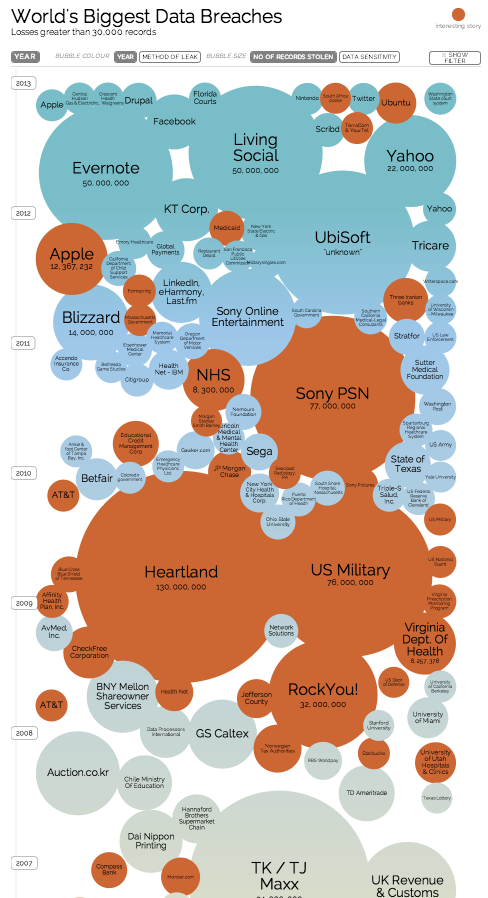Introduction
Almost a year and a half ago, I began my research with the Political Psychology and International Relations (PPIR) Lab. I started by looking at Japan and East Asian relations and political apologies, and my project eventually morphed into examining national identity. The path of my research project can be read here on the Social Science Research Methods Center website.[1]
Using the ideas and methods from Dr. Allan and Dr. Bentley’s book, Making Identity Count, I expanded their demographic survey of extant literature to include popular media and culture so that there is more representation of the common people in the analysis of national identity. Although national identity is something that is represented in all aspects of life, where it is represented in the demographic survey can change the interpretation of national identity categories.[2]
Literature Review
My research is based off of a proof of Dr. Allan and Dr. Bentley’s book, Making Identity Count. Professor Holmes and I received a proof of their book earlier this spring, and the book discusses how to create a quantitative method of measuring national identity as well as a brief process on coding national identity. National identity is critical in understanding Constructivism. Constructivism is one of the three mainstream International Relations theories. Constructivist theory is the idea that states act according to their perceived identity, instead of their relation to power. The problem with Constructivism, however, is that it relies heavily on a subjective sense of self. The lack of reliability and validity of Constructivism has been one of the main critiques of the theory. To address this issue, Dr. Allan and Dr. Bentley believe that by measuring national identity quantitatively can help produce reliable information to better understand interstate integrations through national identity.
National identity is a network of categories that help creates a definition of what it means to be a member of a nation. This “network of categories” before representing the state, begins on an individual level. However as humans, a part of how we understand ourselves in relation to others is through our identification with a group. Group habits and social norms are strong forces in our day-to-day lives that restrict our range of intentional actions. How an individual feels and decides are reflections of “social stocks of knowledge,” which are the norms they receive and reproduce everyday. These norms are also reflected in institutions, and also can be applied more broadly on the state.
From the norms and social stocks of knowledge groups develop national identity categories, unintentionally, through extant literatures. Demographic surveys create categories that are found in everything that is said or written, because they are deeply integrated in our perception of self. The book is based off of the assumption that because states are ideationally integrated and represent national identity, political leaders act on the socially constructed stocks of knowledge in the society that they represent. The goal for Dr. Allan and Dr. Bentley’s research was to survey as many types of texts and create a list of categories that are most representative common stock of knowledge on national identity. By better understanding national identity categories, we can see them as constraints on political leaders and their policies, because represent the state. Their decisions become the actions of the state, which in theory reflects the people and their ideas about the state. By quantitatively understanding national identity, Dr. Allan and Bentley hope build a more comprehensive theory of Constructivism.
In Dr. Allan and Dr. Bentley’s research they used public speeches, newspapers, textbooks, novels, and movies as their base texts to gather common knowledge on national identity. This research is heavily interested in interstate interactions within the framework of Constructivism. In other words, how diplomats and state officials interact on their understanding of what the state should do. However, if we are examining national identity we must go beyond how the country’s top officials views of the state and go into more mainstream sources as well. I agree with Dr. Allan and Dr. Bentley’s assumptions that national identity is ideationally integrated within a whole nation and that it is near impossible to extract one’s self from the social constructed categories. However, I find the choice of texts from their research to lack sufficient representation of the common people. Only movies and novels can be interpreted as popular media and culture. But how many people read these books and watch these movies? Do they fully represent the Japanese people? I examined popular media and culture as an extension on the existing demographic survey conducted by Dr. Allan and Dr. Bentley to helps better identify how the people view their state.
Methods
Dr. Allan and Dr. Bentley’s method of conducting demographic surveys to reflect national identity is a simple yet complicated process. Instead of having a list of pre-theorized categories and notions, identity categories are created by an analyst based off of three concepts. The three concepts are valence, aspirational versus aversive, and significant others. Valence assess whether or not the identity is a good or bad feature. Aspiration versus aversive is a comparative measure in whether or not the feature is something to strive for or avoid. Lastly, significant other is another comparative assessment in who or what they are measuring up with. Taking these concepts into consideration, an analyst examines the extant literatures, and then decides whether or not certain ideas are significant identity categories. This process can produce a list of fifty to a hundred categories. The top twenty categories are then examined to construct a dominant discourse that later can be used to describe the unique identity of the state. Although the purpose of this method is to create a reliable and objective source of national identity, the book emphasizes on the equifinal product of the research. Variation in may exist during the coding process, but in the end the top categories should remain consistent regardless of who the analyst is.
As a part of my research, I chose to examine popular media and culture as an additional source of material to examine national identity. Specifically I will be examining Japan’s popular media and culture, because I began my research questioning whether Japanese national identity influenced Japan’s foreign policy with East Asian countries. I am fluent in Japanese, and well acquainted with Japan’s popular trends and media. I know from experience that not a lot of my friends and family members read the most popular books or watch movies regularly (which are a part of the extant literature used in demographic survey by Dr. Allan and Dr. Bentley’s study as a source of popular voice). But does that mean they are any less Japanese than people who do? Of course not! I want to examine alternative source of social common knowledge that resonates with the broader Japanese population. If something is popular, that means a wide range of individuals commonly shares these ideas. Why would popular media and culture not have information pertaining national identity?
I examined two TV drama series, two celebrity blogs, two music artists, and an article on trending topics and people from 2010. Dr. Allan and Dr. Bentley’s research is based off of information present in 2010, and I wanted to stay consistent with their time frame with my extant literature. The TV series I chose held the highest average viewing rates in Japan.[3] They were “Freeter, Ie wo Kau” and “Rinjō,” which roughly translates to “Part-time worker, buys a house” and “Presence.” The first series a is family drama about a socially withdrawn son’s attempt to buy a house for his depressed mother by finding a stable job. The second series is a mystery drama where a team of coroners works with the police to solve murders. I only watched the season finale for both series, due to time restraints. I looked into celebrity blogs, because blog popularity often comes from of the relatedness of the posts. I examined the most popular celebrity blogs from April of 2010, because I was unable to find a list of top ranking blogs for the year. April was chose arbitrarily.[4] A former reality show participant writes the first place blog, usually on her day-to-day activities and promoting various products. The second place blog is no longer available to view. A former professional wrestler, and television entertainer, writes the third place blog. She often writes about her day-to-day activities with her family. From the blogs I chose, I read the posts on the fifteenth of every other month. If a post for the fifteenth did not exist, I read the next available post of that month.[5] The two music artists I examined, AKB48 and Arashi, sold the top four selling singles in 2010. I examined their music videos and lyrics for theses singles as a part of my analysis.[6] Lastly, I read an article on the top trending people and topics as interpreted by Oricon Chart. Oricon Chart is a trend-collecting site that is often used in Japanese media as a reliable source.[7] The article broadly discusses the trends of 2010, and I read made notes base on these trends.
Data
The raw identity categories are on the table below. Due to the small scale of my research, any category with more than four raw identity counts is presented in the table. Eighteen identity categories were identified. The data presented here is small sample of popular media and culture from 2010, to match the data year presented in Dr. Allan and Dr. Bentley’s book.
| Categories |
Total |
TV Dramas |
Blogs |
Music |
Trends |
| Finding a Job |
6 |
6 |
0 |
0 |
0 |
| Family |
11 |
5 |
3 |
0 |
1 |
| Parental love |
6 |
5 |
1 |
0 |
0 |
| Goals |
6 |
4 |
0 |
1 |
1 |
| Starting over |
4 |
3 |
0 |
1 |
0 |
| Letting go of the past |
4 |
2 |
0 |
2 |
0 |
| Positive anthem |
4 |
0 |
1 |
3 |
0 |
| Working hard |
4 |
3 |
0 |
1 |
0 |
| Feeling close to others |
7 |
5 |
1 |
1 |
0 |
| Moving forward |
4 |
3 |
0 |
1 |
0 |
| Going to help someone |
4 |
0 |
4 |
0 |
0 |
| Promotional |
6 |
0 |
5 |
0 |
1 |
| Food interests |
6 |
0 |
5 |
0 |
1 |
| Looking up to |
6 |
6 |
0 |
0 |
0 |
| Job purpose |
4 |
4 |
0 |
0 |
0 |
| Kawaii |
4 |
0 |
1 |
2 |
1 |
Family is the most prominent category presented in my research. Interestingly, this category is also present in Dr. Allan and Dr. Bentley’s research as “family-orientation” in the chapter on Japan. However in their book, the category is seen as a negative aspect of Japanese identity. In the book they explanation this may be due to the difficulty of raising a child. Families are no longer multi-generational and often isolated. Although government programs, such as cash child allowances, have been implemented to ease some of the burden of raising children, the effectiveness is yet to be determined. On the other hand, in popular media and culture family is portrayed positively, almost as an ideal to be achieved. Celebrities post photos of their children and husbands in a loving environment. TV series depict the dedication of a socially withdrawn son finding a job to support his depressed mother. Whether it is repairing existing relations or building a new family, the Japanese people closely relate to the concept of family. Although the Japanese acknowledge the difficulties of building families, the aspiration of good family relations is still present.
Japanese popular media and culture differs from the data presented in Dr. Allan and Dr. Bentley’s research through the presence of positive messages. Prominent categories in their research discuss aging, welfare, self-sacrificial, along with other phrases that are typically negatively associated. However, in my research I found phrases such as goals, starting over, moving forward, and going to help someone as prominent themes that express confidence towards the future. Perhaps it is only in popular media where positivity for the future, whether it is immediate or long term, is expressed explicitly. Something is popular because a demand exists, and if the Japanese people are demanding positive messages I believe it is telling us that they are forward looking nation ready to take on the future.
Disclaimer
There are many shortcomings in my findings, especially when compared to that of Dr. Allan and Dr. Bentley’s. For one, the analysts for Dr. Allan and Dr. Bentley’s research consisted of graduate students and junior faculty members trained in qualitative methods. Undergraduate students also participated in their research, but received a two-week of training on how to analyze information to increase reliable results and decrease over-reading of information. Although I kept in mind the three concepts (valence, aspirational versus aversive, and significant other) as I went through my materials, I lack the specific training that the analysts had for this project. As a result my data may be different than I if I had received the same training as the analysts for this project.
In addition, Dr. Allan and Dr. Bentley’s study examines text that is central to the identity of the Japanese people. This means using information well circulated throughout Japan, and works to limit political action through their understanding of Japanese identity. Of the extant literature used by Dr. Allan and Dr. Bentley textbooks, public speeches, and newspapers are managed under the supervision of the government. It is understandable that they have the power to limit political actions and represent the state. Popular books and movies, however, are more reflective of the common people who vote for the politicians. Although my choice of extant literature is not related to the government directly, it is an extension of public views on national identity that cannot be fulfilled simply by books and movies.
Conclusion
National identity is how a state understands itself in relation to other states. This understanding is rooted within each individual and manifests in the culture and extant literature of the state. Dr. Allan and Dr. Bentley’s book, Making Identity Count, examines how to quantitatively analyze national identity to build reliability in Constructivist theories. Their methods appear to be replicable, and it provides a quantitative analysis of national identity. In their research they conduct of demographic survey on textbooks, newspapers, public speeches, and popular movies and books. As an extension of the literature used, I examined popular media and culture to examine more of Japan’s grassroots understanding of national identity. Despite the fact that national identity is integrated within the psyche of the nation, depending on the choice of extant literature differences in national identity categories emerge. In my research on popular media and culture, I saw Japanese people responding to positive family relations. Despite of the struggles depicted in the book on “family-orientation,” Japanese people appear to want to achieve good familial relations. Similarly, a general trend of positive views towards the future can be seen in my identity categories. Although I lack the proper training as the analysts for Dr. Allan and Dr. Bentley’s research, I believe that general population based demographic surveys can provide a more nuanced understanding of national identity. The extent in which my categories influence political leaders for state actions is debatable at best. However, including more popular extant literature in addition to that used by Dr. Allan and Dr. Bentley may provide a holistic understanding of national identity.
[1] Link: http://ssrmc.wm.edu/research-begins
[2] Ted Hopf and Bentley B. Allan, eds., Making Identity Count: Building a National Identity Database, 1 edition (New York, NY: Oxford University Press, 2016).
[3] Link: http://artv.info/ar10.html
[4] Link: https://www.cyberagent.co.jp/news/press/detail/id=2906
[5] Link: http://ameblo.jp/momo-minbe/
Link: http://profile.ameba.jp/hokuto-akira/
[6] Link: http://www.oricon.co.jp/rank/js/y/2010/
[7] Link: http://www.oricon.co.jp/news/79081/full/







